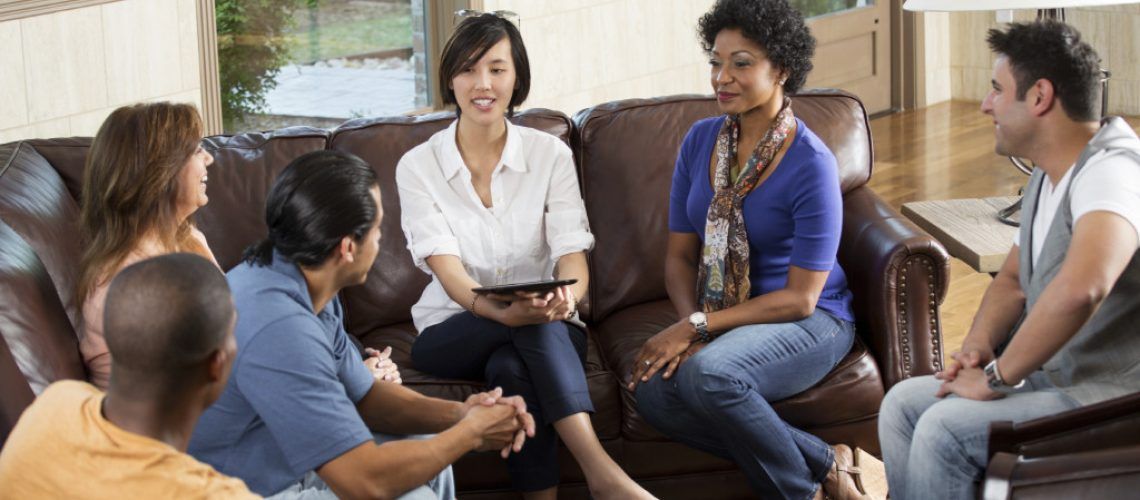Group therapy is an often overlooked option for mental health treatment. Many patients shy away from group therapy because they believe it won’t lead to as deep engagement with the therapeutic process in comparison to one on one therapy with a practitioner, but for some purposes, this couldn’t be farther from the truth.
Group therapy is a great way to get on the mend by hearing and discussing the experiences of other people. In fact, group therapy is scientifically confirmed to be one of the highest-impact therapeutic methodologies.
Group therapy sessions aren’t a free for all. Just like in individualized therapy sessions, a practitioner leads the group to ensure that discourse will be helpful for everyone. While guiding a group therapy session, there are some core principles which the practitioner will use which we’ll discuss in-depth in this article.
The principles behind group therapy are also central to its benefits, and a few are particularly important.
The ABCs of group therapy
In general, all group therapy sessions will recapitulate a sense of mutual altruism, belonging, self-control, catharsis, and learning. Each session may have a different focus, but the theme remains the same: improving mental health by shared vulnerability in a safe and accepting setting.
Keeping the right frame of mind is essential for having a good therapeutic experience, and group therapy is no exception. The original practitioners that defined group therapy protocols came up with an extensive list of traits. The especially central principles and benefits of group therapy can be remembered via the ABCs.
Altruism
Altruism is the perspective that all of the group’s participants share. Group therapy is meant to be a mutually healing experience, and mutual goodwill is mandatory. Acceptance of your experience is linked to the acceptance of your experience by others.
Refraining from negative judgment is a necessity. While traditional psychotherapy does attempt to build self-acceptance, it’s not as palpable of a room full of people whose experiences will echo your words. By coming together with others who are grappling with the same issues as you are, the isolation of mental illness is decreased.
Belonging
Belonging goes hand in hand with altruism. Part of building a healthy therapeutic environment is creating a sense of safety and protection. Finding your peers and altruistically accepting them for who they are and the struggle that you share with them creates a small community in which you are a core member. Being part of a community generates good feelings, and good feelings make for effective healing.
Catharsis
The act of releasing pent up emotions is a critical part of all therapy but is especially emphasized within group therapy. While a one on one interaction with your practitioner can be extremely cathartic, it’s often simply not as intense as the magnitude of release to a larger crowd. In the community of the group, emotions which you let go of will be replaced with the filling acceptance and support of the everyone else.
Developing social and coping skills
Learning how to cope with mental illness in a healthy way goes hand in hand with developing healthy responses within a social context. The context of group therapy is thus a uniquely powerful environment. Developing social skills is often one of the core objectives of group therapy, and is central to using group therapy to treat disorders like social anxiety or borderline personality disorder.
Group therapy works to develop social and coping skills because each must exist within the group’s small community. The practitioner will likely guide the members of the group through equitable discussions in which group members will learn how to interact and respond to one another.
The setting of shared vulnerability means that it’s okay to make mistakes while developing the skills, which encourages quick learning and trying again after missing the mark.
Existential agency
Group therapy raises another social issue: existential agency. As the group members learn to be members of their therapeutic community, questions about their place and their role within the group are bound to occur.
For group therapy, many of these internal dialogues are likely to be comparisons of internal experience to the stated experience of others within the group. These introspective sessions are part of the design of group therapy and are central for individuals to realize the therapeutic benefits.
By questioning their experience and wondering about their place in the group, group members will develop a greater sense of self-directedness, and reclaim their lives from their shared illnesses.
Jumping in
Like all psychotherapeutic methods, group therapy requires enthusiastic participation by the people seeking to heal. The more forthcoming and the more receptive you are about sharing with the group, the better therapeutic experience you’ll have.
It’s part of the practitioner’s job to help participants get over their initial squeamishness about sharing, so don’t be afraid to ask for help to open up. Though it can be difficult to share your innermost experiences with a room full of strangers, rest assured that you have far more in common with the other people in the session than you know.
The greatest assets of group therapy are an undeniable lesson that you do not suffer alone, and proof that your experience is heard and understood.



